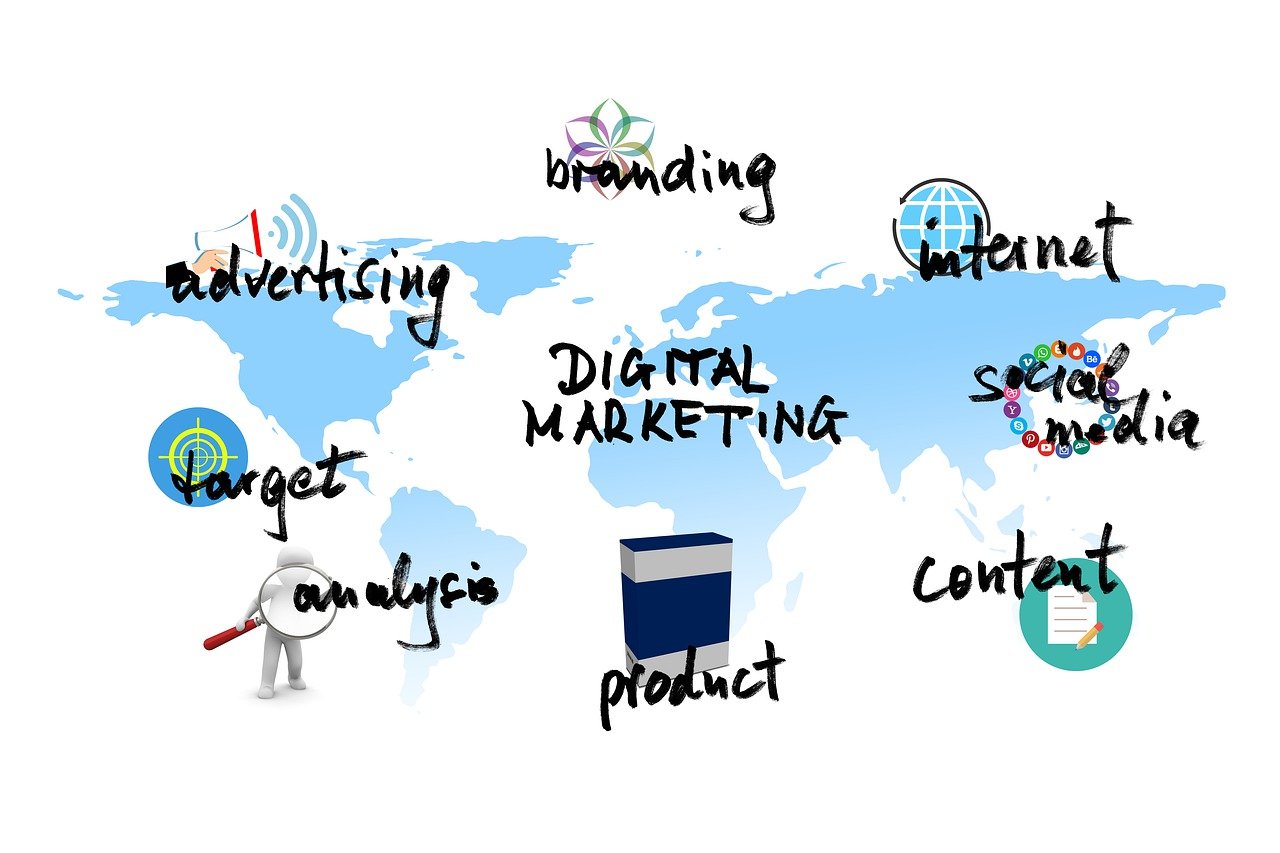The digital marketing planning process is a structured approach that businesses use to develop, execute, and evaluate their online marketing strategies. A well-planned digital marketing strategy helps companies reach their target audience, increase brand awareness, and drive conversions. Here’s an outline of the key steps in the digital marketing planning process:
1. Situation Analysis
- Conduct a SWOT Analysis: Assess the strengths, weaknesses, opportunities, and threats of your business and its digital presence. This analysis helps you understand internal and external factors that will impact your strategy.
- Evaluate Current Digital Presence: Audit your current online channels, including your website, social media platforms, email campaigns, and search engine rankings.
- Analyze Competitors: Research competitors’ digital strategies to identify what’s working in your industry and where there are gaps or opportunities to differentiate your brand.
2. Set Goals and Objectives
- Define Clear Objectives: Your objectives should be SMART (Specific, Measurable, Achievable, Relevant, and Time-bound). These goals might include increasing website traffic, improving lead generation, boosting sales, or enhancing brand awareness.
- KPIs (Key Performance Indicators): Establish the metrics you’ll track to measure success. For example, you might track conversion rates, click-through rates (CTR), or return on investment (ROI) for each campaign.
3. Identify Target Audience
- Create Buyer Personas: Understand your ideal customer by developing detailed buyer personas. Include demographics, psychographics, behaviors, needs, and pain points.
- Segment Your Audience: Segmenting your target audience allows for personalized marketing efforts that cater to specific groups, increasing the effectiveness of your campaigns.

4. Develop a Content Strategy
- Content Planning: Decide what types of content (blogs, videos, infographics, etc.) you will create to engage your audience. The content should address your audience’s needs and support your marketing goals.
- SEO Optimization: Ensure that your content is optimized for search engines by focusing on relevant keywords, high-quality backlinks, and on-page SEO techniques like meta tags and descriptions.
- Content Calendar: Create a content calendar to schedule the publishing and promotion of your content. This helps ensure consistency across channels.
5. Select Digital Marketing Channels
- Owned Channels: Use your website, blog, and email list to directly engage with your audience. Ensure these channels are optimized and align with your overall strategy.
- Paid Channels: Leverage paid advertising platforms such as Google Ads, Facebook Ads, or LinkedIn Ads to reach a broader audience. Paid strategies should be aligned with your goals and budget.
- Earned Channels: Encourage word-of-mouth, social sharing, and PR efforts to amplify your message through organic channels.
- Social Media Platforms: Choose the platforms that your target audience uses most frequently (e.g., Instagram, Facebook, LinkedIn, YouTube) and create strategies tailored to each one.
6. Budget Allocation
- Set a Budget: Allocate resources across different marketing channels based on your goals and the anticipated return on investment. Your budget should account for ad spend, content creation, software tools, and personnel costs.
- Optimize Spending: Continuously track the performance of each channel to ensure your marketing budget is being spent effectively. Adjust your budget as needed to prioritize high-performing areas.
7. Implementation and Execution
- Launch Campaigns: Execute your digital marketing campaigns across chosen channels. This includes launching content, ads, social media posts, email campaigns, and more.
- Cross-Channel Integration: Ensure all channels are working together cohesively, delivering a unified message across platforms. A multichannel approach often yields better results than siloed efforts.
8. Monitor and Measure Results
- Track Performance Metrics: Continuously monitor KPIs like website traffic, conversion rates, and engagement metrics using tools like Google Analytics, social media insights, or third-party reporting platforms.
- A/B Testing: Run tests on different campaign elements (such as ad creatives or email subject lines) to optimize performance and understand what resonates most with your audience.
9. Analyze and Optimize
- Evaluate Performance: Compare actual results with your initial goals. If you’ve met or exceeded your objectives, analyze what worked well. If you’ve fallen short, identify the gaps and areas that need improvement.
- Optimize Campaigns: Make data-driven decisions to optimize your campaigns. This could mean reallocating budget, refining your audience segments, or adjusting your messaging.
- Continuous Improvement: Digital marketing is an ongoing process, so refine your strategy over time to keep up with changing market conditions, trends, and customer preferences.
10. Review and Report
- Create Reports: Develop detailed reports to summarize the performance of your campaigns. Highlight the metrics that matter most and provide insights to stakeholders.
- Learn from Feedback: Gather feedback from your team, customers, and analytics to inform future campaigns and continuously improve your digital marketing efforts.
By following this structured planning process, businesses can develop more effective digital marketing strategies, drive engagement, and achieve sustainable growth in the digital landscape.

